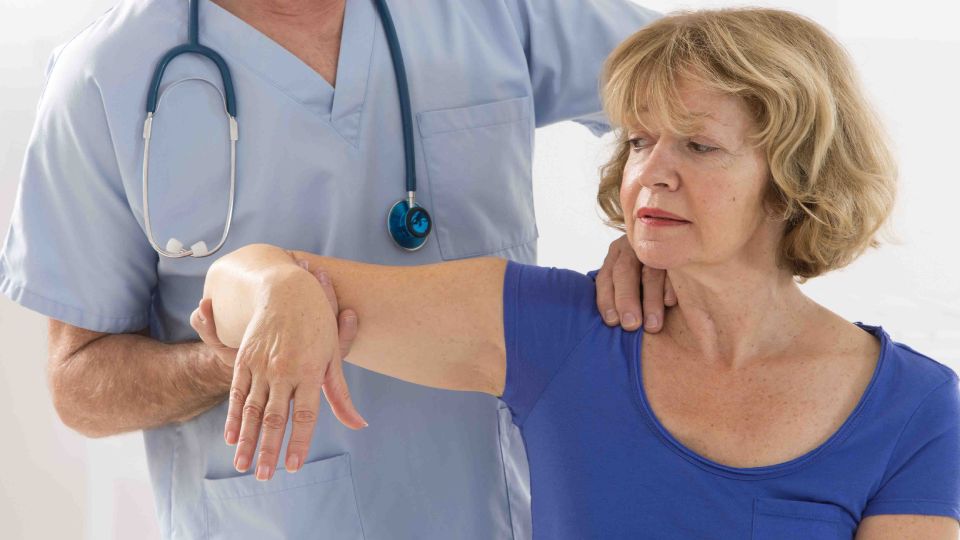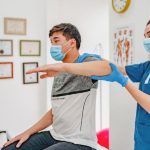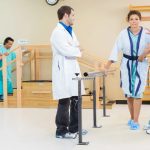A stroke is an acute disruption of cerebral circulation (CC), caused by a blockage (ischemia) or rupture of a blood vessel supplying part of the brain, or by bleeding into the brain’s membranes. The outcome of a stroke and the nature of the resulting disability depend on the location of the damage in the brain.
The main risk factors for stroke are hypertension, diabetes, obesity, heart disease, stress, low physical activity, and smoking.
According to the WHO, stroke is the most disabling disease in the world, with cerebrovascular disease, along with other diseases, ranking first in the structure of morbidity and mortality and being a major medical and social problem worldwide.
The importance of rehabilitation after a stroke is especially high, considering that a stroke causes persistent disability and significant impairment of patients’ social and daily functioning.
Video: “Rehabilitation after a stroke”
A set of exercises for rehabilitation of post-stroke patients. Set No1 is aimed at improving the functions associated with mobility in bed.
For additional information about the rehabilitation after a stroke you can watch a video demonstrating exercises and rehabilitation recommendations.
Why does a stroke occur, and what types of stroke are there?
There are two main classifications of stroke:
- ischemic, caused by a blockage of a blood vessel in the brain tissue, leading to irreversible changes;
- and hemorrhagic, caused by a rupture of a blood vessel in the brain, leading to bleeding into the brain tissue.
Cardiovascular diseases, such as atherosclerosis, ischemic heart disease, and hypertension, can lead to stroke. Predisposing factors include stress, fatigue, obesity, and an unhealthy lifestyle. Genetic factors also play an important role. For a long time, stroke was considered a disease of the elderly, but in the last 20 years, vascular pathologies have become more frequent in patients aged 25-40.
It is essential to begin rehabilitation after a stroke once a patient’s condition has stabilized. The first six months are the peak of neurological rehabilitation, during which the patient is most likely to regain lost functions. Early rehabilitation reduces the risk of serious complications and recurrent strokes and allows patients to return to daily life more quickly.
Stroke rehabilitation aims to maintain or improve the range of motion, muscle strength, bowel and bladder function, and functional and cognitive abilities. Specific programs are determined based on the patient’s social circumstances (e.g., prospects of returning home or to work), ability to participate in rehabilitation programs under the guidance of a nurse and therapist, ability to learn, motivation, and skills. Stroke with impaired understanding often makes rehabilitation particularly challenging.
Rehabilitation should begin immediately after the stabilization of the patient’s health to prevent secondary disorders and to prevent the onset of depression. Measures to prevent depression should be initiated even before the stabilization of the disease. Within 48 hours after a stroke, patients can safely start sitting up in bed if they are conscious and have no neurological conditions. In the early recovery period after a stroke, affected limbs will be weakened, and each joint should undergo passive exercises three to four times a day with a normal range of motion.
Regaining the ability to get out of bed safely and independently and transfer to a chair or wheelchair is essential for the patient’s psychological and physical well-being. Difficulties with mobility, spasticity, visual field impairments (e.g., hemianopsia), coordination problems, and aphasia require specialized care.
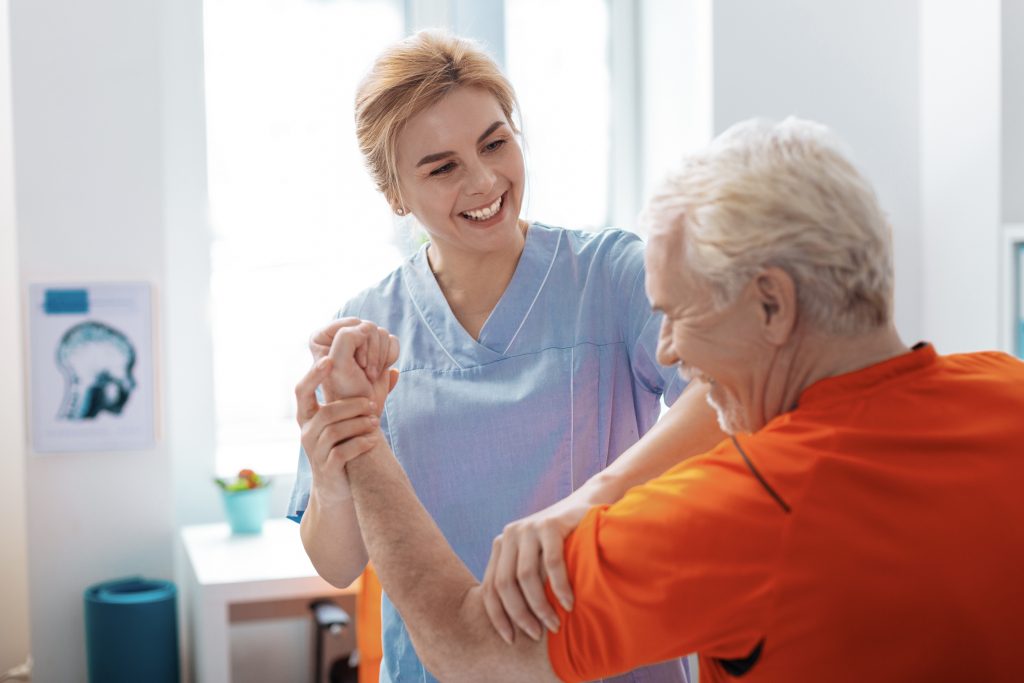
Rehabilitation goals
During the acute phase of the disease, gentle exercises are used, as all methods aim to stabilize internal organs. Positioning therapy is carried out. By placing the patient in the correct position, the development of contractures is prevented, promoting the early start of active movements.
During a prolonged bed rest, the method of vertical positioning is used. The patient’s body is slowly moved from a horizontal to a vertical position. This exercise is especially effective in the first two days of the disease. Passive limb movement improves blood circulation and facilitates recovery after a stroke.
The tolerance to physical loads improves gradually. In the first days after the onset of the disease, strict bed regimen is followed . As soon as this can be done, the patient may sit up in bed and then try to stand upright. Regular physical exercises are half of the success. Gradually, the patient will be able to walk around the room, and then in the hospital halls.
Speech difficulties should be managed with the help of a speech therapist. This is done in the form of conversations. The load is gradually distributed evenly. Exercises initially focus on reproducing individual sounds, followed by articulatory, respiratory, and vocalization exercises to stimulate the muscles involved in the act of speech. Various exercises can be used at home, and you can watch a video at the following link – https://ghrs-group.ru/rehab/illness/reabilitatsiya/nevrologiya/insult
Signs of ischemic stroke
Further recovery after an ischemic stroke depends on the speed and quality of emergency care provided. When signs of ischemia appear, it is necessary to call an ambulance. Before the ambulance arrives, a patient should lie in a horizontal position with their head elevated. Do not give the patient anything to drink or eat, as their ability to swallow may decrease during the acute phase of the disease.
How to recognize the signs? Ask the patient to raise both arms vertically, smile, and say a simple sentence. If the person has had a stroke, they will not be able to raise their arms (one of them will drop), their smile will be distorted to one side, and their speech will be unintelligible and garbled.
Consequences of stroke
The most common consequences of a stroke include partial or complete paralysis, speech and language impairments, and coordination problems. The sooner the patient receives first aid, the less disability will be. Rehabilitation after a stroke also plays a crucial role. A competent and comprehensive medical program allows the patient to return to normal life as quickly as possible.
Acute and subacute phase (up to three weeks). In the first hours and days after a stroke, doctors fight for the patient’s life and use medications and other treatment methods to restore cerebral blood flow, which also helps to reduce the rate and number of complications. During the acute phase, the patient is hospitalized.
Early recovery. It begins when the life-threatening condition has receded and lasts up to six months. During this time, the doctor evaluates the patient’s health, all the consequences of the stroke, and may choose a rehabilitation program. The patient returns home but visits the hospital daily for rehabilitation treatment.
Recovery occurs more slowly; after six months, the patient’s health normalizes, partially lost functions return, and the doctor modifies the rehabilitation program. This period lasts up to one year. Complete recovery is possible in about 10% of cases.
Unfortunately, if the patient fails to recover some lost functions within a year, the changes are considered irreversible. The doctor’s task is to help the patient adapt to their new state of health condition and prevent recurrent strokes. Regardless of the rehabilitation results, the patient should be hospitalized once a year for the rest of his life.
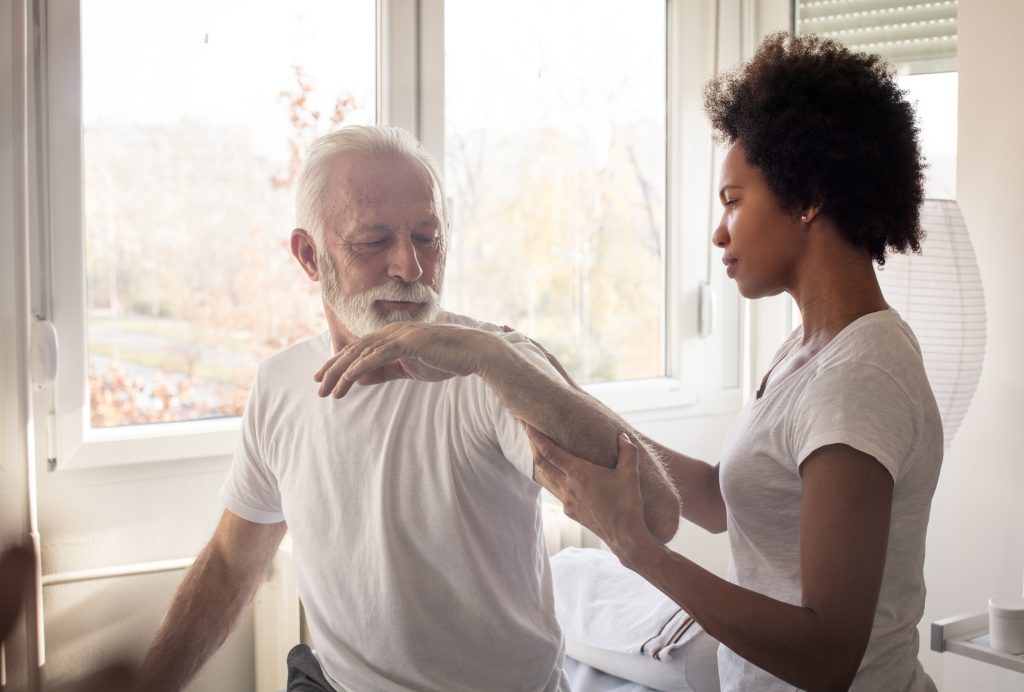
Rehabilitation after stroke
A while ago, a stroke was often associated with elderly people. However, nowadays, stroke is a common disease among “young” people. To prevent a stroke, it is essential to take care of your health and undergo proper diagnostics.
Every year, more than 6 million people experience a stroke, and 4.5 million people die. The consequences of a stroke are motor, speech, cognitive, and emotional disorders that can be recovered to some extent through active rehabilitation after a stroke.
Rehabilitation after a stroke should begin after the acute phase of the stroke.
It is essential to start a rehabilitation program within three months after the stroke. This increases the chances of recovery up to 90% of lost functions. Since the combination of all factors leading to the deterioration of physical condition is different for each patient, general recommendations are not as effective as a personalized approach.
Other factors also influence the duration of rehabilitation after a stroke:
- Stroke mechanisms. There are two main types of stroke: ischemic stroke and hemorrhagic stroke. Ischemic stroke occurs in 80% of cases and is caused by the loss of blood supply to a certain area of the brain. With proper and timely treatment, the body is likely to recover from this type of stroke. Hemorrhagic stroke is characterized by bleeding deep into the brain. The prognosis for life is poor, with a 50-70% probability of death.
- The degree of brain tissue damage. The most severe functional disorders occur in extensive strokes that affect large areas of the cerebral cortex. In this case, even if the patient survives, recovery may take several years, and complete recovery may be impossible.
- Age and comorbidities. The older a person becomes, the more difficult it is to cope with a stroke, and chronic diseases (especially cardiovascular) often make it impossible.
- Stroke classification. Recurrent strokes always increase the risk of death. In elderly people, recovery after the first stroke takes an average of eight months, while recovering from the second stroke may take more than a year.
- The psychological and emotional condition of the patient. Fighting such a severe disease requires tremendous willpower and the desire to stay alive, which not all patients possess.
Motor function rehabilitation
One of the complications of a stroke is paralysis or paraplegia. It is muscle tension in which patients cannot move their upper or lower limbs or have difficulty moving them. Often, stroke patients are completely immobilized.
It used to be believed that nerve cells do not regenerate, but this theory has now been entirely refuted.
Numerous clinical studies have shown that neurons not only regenerate but can also take on the functions of other (severely damaged) areas of the brain. This is a significant breakthrough in the field of neurology.
In clinical practice, the following methods of rehabilitation for motor disorders are used:
- Reflexotherapy is indicated at the beginning of rehabilitation and is aimed at normalizing neuromuscular tone.
- Exercises are used to restore impaired sensations.
- Bobath therapy is aimed at stimulating “correct motor patterns”. This therapy can effectively regulate muscle tone.
- Exarta technology – the latest method of kinesiotherapy, used in rehabilitation at the late stages of stroke. Specially trained specialists guide patients through the necessary exercises and movements, which are performed with Exarta device.
- PNF (proprioceptive neuromuscular facilitation). This method is based on gentle stretching of muscle fibers.
Acute and early recovery stage
If the patient’s condition allows, rehabilitation after stroke (RAS) in a rehabilitation center can begin within the first week of treatment while the patient is still in the hospital room. Good results are often achieved within the first three to seven days if there are no contraindications. If symptoms are severe (consciousness impairment or significant brain damage), rehabilitation measures are postponed until the patient’s general condition stabilizes.
The most effective rehabilitation measures after a stroke are taken within the first six months. During this period, pronounced neuroplasticity (the possibility of new pathways in the brain) is observed. Rapid and flexible recovery of affected areas is possible during this period, and rehabilitation center specialists take this into account when developing an individual recovery treatment plan.
Late and remote (residual) stage of RAS
After discharge from the hospital, a neurorehabilitation program should be started if the patient still has motor coordination disorders, speech difficulties, or hemiplegia. After that, the body’s ability to recover will gradually decrease, but the patient should continue to perform exercises and engage in self-care. This rehabilitation period takes place at home, so the patient’s relatives bear all the responsibility.
The patient should concentrate mainly on consolidating acquired skills and regular visits to the doctor. Rehabilitation is recommended in the clinic following an individually developed program under the close supervision of a specialized doctor. Rehabilitation should be continuous and comprehensive.
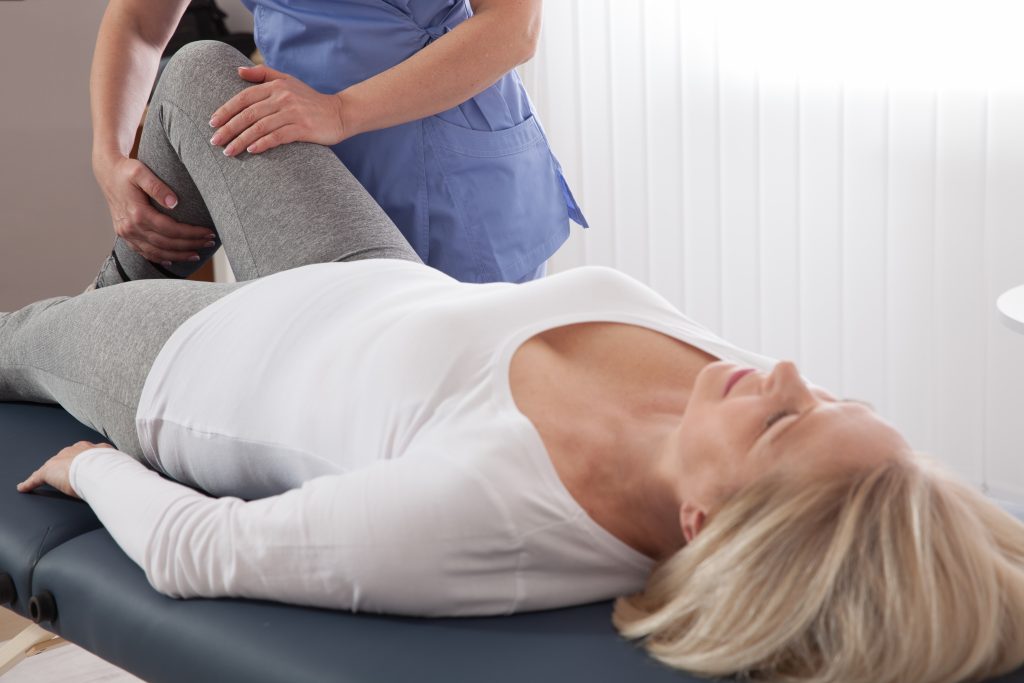
What you need to know about rehabilitation
A rehabilitation session for paralysis after a stroke lasts from 1.5 to 2 hours. Before starting rehabilitation, a physiotherapist develops an individual treatment plan that takes into account the patient’s age, health condition, as well as the degree and cause of paralysis. The effectiveness of the patient’s physiotherapy depends on the degree of paralysis. The goal of physiotherapy is to give patients the ability to do something independently.
During the rehabilitation of people with paralysis, special exercises, psychotherapy, and massage using smart devices are indicated. One of the most effective methods of paralysis treatment is pool exercises. Water helps to reduce the load on the patient, as it lifts a large weight and facilitates movement.
The main goal of physiotherapy is to replace or improve the patient’s functions that he used to have. The patient should be able to use the toilet, take a bath and eat. Exercises to restore swallowing and speech are also performed. Physiotherapy also provides psychological support.
conclusion
Check out the demo version of our workouts for rehabilitation of post-stroke patients on YouTube.
You can find more information about Stroke in our Library of Articles.
Our website presents sets of exercises for the rehabilitation of post-stroke patients in the following four areas:
-
A SET OF EXERCISES FOR REHABILITATION OF POST-STROKE PATIENTS. SET №1 IS AIMED AT IMPROVING THE FUNCTIONS ASSOCIATED WITH MOBILITY IN BED
-
EXERCISES FOR REHABILITATION OF POST-STROKE PATIENTS. SET №2 IS AIMED AT IMPROVING THE MOBILITY AND STABILIZATION OF THE PELVIC COMPLEX
-
A SET OF EXERCISES FOR REHABILITATION OF POST-STROKE PATIENTS. SET №3 IS AIMED AT IMPROVING THE MOBILITY AND FUNCTION OF THE UPPER LIMB, STABILIZING THE SHOULDER GIRDLE
-
A SET OF EXERCISES FOR REHABILITATION OF POST-STROKE PATIENTS. SET №4 IS AIMED AT IMPROVING THE MOBILITY AND FUNCTION OF THE LOWER LIMB, STABILIZING THE PELVIC GIRDLE
You may also find useful information and sets of exercises in the section APHASIA AND DYSARTHRIA, where 5 sets of exercises for rehabilitation for speech disorders are currently presented.

